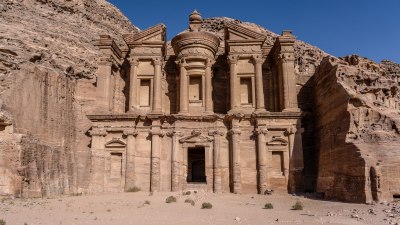Why This Desert in Africa Looks Like Another Planet
Discover the alien-like landscapes of Africa's deserts and what makes them so otherworldly.

This image was created with the assistance of Freepik
The African deserts are renowned for their striking beauty, but some regions appear remarkably alien, evoking imagery of distant planets.
One of the most intriguing aspects of these deserts is the unique geological features that define them. Among these, the Richat Structure, often referred to as the Eye of the Sahara, stands out due to its circular form and concentric rings.
Geological Formation
The Richat Structure is not a meteorite impact site, as some initially believed, but instead a symmetrical uplift that has eroded over time. This formation reveals the Earth’s geological history, featuring layers of rock that date back millions of years.
Additionally, certain deserts, like the Namib, possess ancient dunes that can reach staggering heights. These dunes are formed by winds that shape the sand over time, resulting in vibrant hues that resemble Martian landscapes.
A Unique Ecosystem
The ecosystems within these deserts often seem out of sync with typical desert life. Flora and fauna have adapted to the extreme conditions, creating a mystical biodiversity that contrasts sharply with the barren surroundings. The Socotra archipelago, for example, boasts plants like the Dragon's Blood Tree, whose unique appearance is often likened to alien vegetation.
Furthermore, the interplay of light and color at sunrise and sunset can create surreal visuals that transform the desert’s appearance, enhancing its otherworldly feel.
Climate and Weather Patterns
The weather in deserts can also contribute to experiences that feel alien. Sudden storms can unleash rain, transforming landscapes in moments. Cumulonimbus clouds towering above create dramatic backdrops unseen in many other parts of the world.
Moreover, the stark contrast between the intense heat of day and the cool nights can lead to unexplained phenomena, such as the mirages frequently observed, which distort perceptions of reality.
Human Connections and Myths
Human history also intertwines with these deserts through ancient cultures that viewed them as sacred places. These regions often inspire myths and legends, adding layers of mystery. The Berbers, indigenous people of North Africa, have culturally significant stories tied to the Sahara, emphasizing its enigmatic nature.
Modern explorers and scientists continue to study these deserts, fascinated by their remote beauty. Many expeditions unravel the secrets of survival in such extreme conditions.
Preservation Efforts
Despite their harshness, these regions face threats from climate change and human activities. Tourism, though beneficial, can also lead to ecological degradation. Conservation efforts aim to protect these extraordinary landscapes from irreversible harm.
Understanding the delicate balance of ecosystems and the impact of modern society is crucial for preserving these desert wonders for future generations.
The Intersection of Science and Art
The aesthetic appeal of deserts has not just captivated adventurers and scientists but also artists and filmmakers. The surreal qualities of these landscapes often serve as backdrops for movies set in extraterrestrial environments. This intersection highlights how art transforms the perception of natural beauty.
Moreover, photographers have seized the opportunity to capture the mesmerizing colors and formations in deserts, showcasing their resemblance to planets far beyond Earth.
Whether through geological characteristics, distinct ecosystems, or vibrant visual phenomena, the deserts of Africa offer a glimpse into a world that feels alien yet is a vital part of our planet. Their preservation and understanding are essential not only for environmental health but also for cultural heritage and inspiration.











